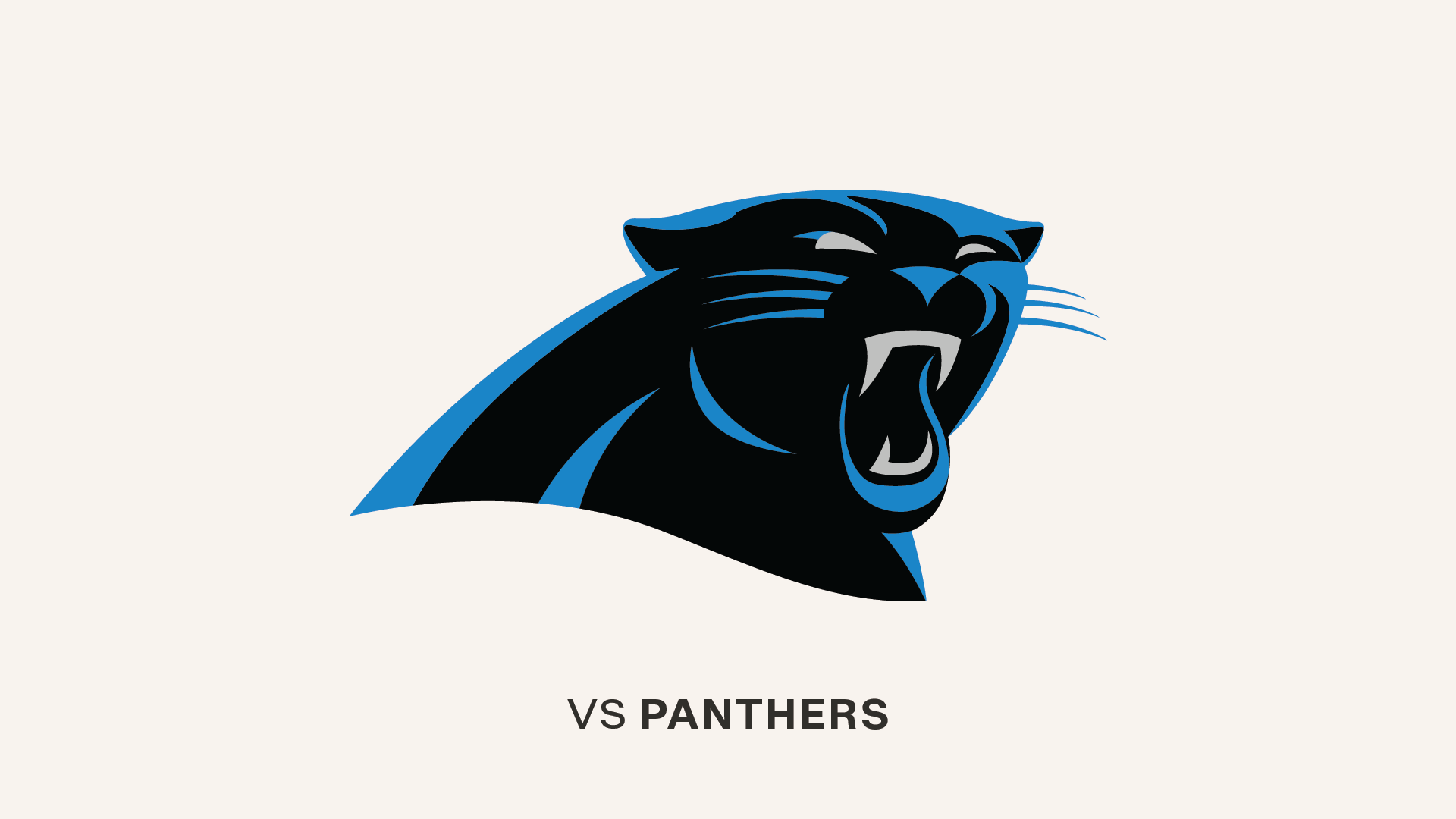The Tampa Bay Buccaneers will name their team captains for the 2025 season soon, and it's a good bet the list will include some familiar names. Lavonte David has already been a Buccaneers captain in each of the last 11 seasons, while Mike Evans has won the "C" on his jersey in each of the past eight years. Others who could repeat after being voted as captains last year include Baker Mayfield, Tristan Wirfs, Vita Vea and Antoine Winfield Jr. Perhaps a new leader or two will emerge this fall.
Those men don't necessarily all lead their teammates in the same way. It's safe to say that Mayfield is going to be more of a vocal type of captain while Evans tends to lead by example. David doesn't say a whole lot, but when he does everyone in the locker room listens.
The Buccaneers, of course, have had other great leaders of many types and stripe through their first half-century of football. As we continue our countdown of the top 50 players (so far) in franchise history and work our way into the 20 that stand at the top of the list, we are set to encounter many such leaders, whether they were stabilizing forces during the first difficult years of expansion, culture changers who helped turn a floundering franchise around or iron men who were the very embodiment of toughness for their teammates, these were some of the most impactful men in team annals, both on and off the field.
Since 1976, more than 1,200 players have worn the Tampa Bay uniform during the regular season, each arriving in his own unique way and each leaving their mark on the club's legacy. This milestone season, we're honoring that impact by naming the Top 50 Players in Buccaneers history. That list was shaped by fan voting throughout the offseason, alongside input from Tampa Bay media and team representatives. And now it is ready to be unveiled.
The Top 50 list has been determined and will be revealed over the course of 10 days, continuing on Wednesday night with the players who landed in spots 20 to 11. We've recruited some of the players who made the list to help us share their own stories and celebrate their teammates and predecessors in a series of breakdown videos. Click here to watch the video reveal of the numbers 30-21.
20. LB Richard Wood, 1976-84
The Buccaneers were desperate for talent and leadership in 1976, when unfriendly rules for populating a franchise team made it difficult for the fledgling team to compete. They found both by trading a future draft pick to the New York Jets for Richard Wood, who had played for Tampa Bay Head Coach John McKay when both were at USC.
Wood started 10 of 13 games he played in that first season with the team, then never missed a game for the next eight years in Tampa, logging 146 appearances and 94 starts. Extremely popular with Buccaneer fans, in part because he painted Batman logos on his elbow pads and tape on his hands, Wood was a hard-hitting presence in the middle of the Bucs' defense that rose to greatness in the late '70s. He remains the seventh-leading tackler in the franchise's record books, with 855 stops, and he also recorded two interceptions, six fumble recoveries and one defensive touchdown. He was the Bucs' leading tackler in 1976, 1978 and 1979, helping the Bucs achieve the number-one ranking on defense in the NFL in that lattermost season.
19. RB James Wilder, 1981-89
James Wilder became the Buccaneers' career leader in rushing yards in the middle of the 1980s and he has not been surpassed since. However, he wasn't originally drafted to be the team's focal point in the backfield and was actually labeled as a fullback during his first couple seasons. However, after averaging about 117 carries and 445 rushing yards from 1981-83, Wilder took center stage in his fourth season and put together by far the most prolific stretch for any running back in the Buccaneers' first 49 seasons.
In 1984, Wilder set the single-season record for the Buccaneers with 1,544 rushing yards, and that to remains the franchise's gold standard for running backs decades later. The following year, he rushed for 1,300 more yards, and he scored 23 total touchdowns in those two campaigns. That's the underpinning for Wilder's career mark of 5,957 yards, nearly 900 more than Mike Alstott in second place. But, while Wilder set a then-NFL record with 407 carries in 1924, there was more to his game than just power-rushing between the tackles. That season, Wilder also led the team with 85 receptions, giving him a whopping total of 492 touches, or approximately 31 per game. Until Mike Evans and Chris Godwin came along, Wilder was also the franchise's career record holder with 430 receptions.
18. DT Gerald McCoy, 2010-18
McCoy is one of three players in this group of 10 who came into the NFL as a top-four overall draft pick, joining Paul Gruber and Simeon Rice. In McCoy's case, he was the third-overall selection in 2010 and, after an initial first two seasons in which he ran into some unfortunate injury luck, he proceeded to emerge as one of the most decorated players and most consistently productive players in team history.
McCoy's first big explosion came in 2012, when he racked up 5.0 sacks and 15 QB hits while rushing up the middle and earned his first Pro Bowl invitation. He would graduate to first-team Associated Press All-Pro honors the following season after a career-high 9.5 sacks, and he would eventually stretch his streak to six straight seasons that ended in Pro Bowl appearances. McCoy's six Pro Bowl selections are tied for the third most in team history with fellow all-time Buccaneer greats Lee Roy Selmon and Mike Alstott. He had at least 5.0 sacks in seven straight seasons for the Buccaneers, joining Hall of Famer Warren Sapp as the only players who can make that claim. McCoy also had between 13 and 24 quarterback hits in each of those campaigns.
17. TE Jimmie Giles, 1978-86
The Buccaneers made the first-overall picks in the 1976 and 1977 drafts and could have done so again in 1978. Instead, they found a way to turn that asset into not one but two of the greatest players in franchise history. First, the Buccaneers traded with Houston to move down from the first pick to number 17, adding promising young tight end Jimmie Giles in the process. Then, the team used that 17th pick to snag Grambling State passer Doug Williams, who would become the first true franchise quarterback in Bucs history.
Giles was ahead of his time as a tight end who could stretch the field and make huge plays downfield. In a 1981 game, for instance, he gave the Buccaneers their first-ever play of 80 or more yards, catching an 81-yard touchdown pass from Williams against the Chicago Bears. Overall, Giles averaged 15.4 yards per catch as a Buccaneer and from 1980-82 he never came in lower than 17.5 yards per grab. Giles' 279 receptions, 4,300 yards and 34 touchdowns are all team records for tight ends and he was welcomed into the Buccaneers' Ring of Honor in 2011, as the third member of that group overall and the first offensive player.
16. WR Chris Godwin, 2017-Present
In the late 1980s and early 1990s, Mark Carrier went from being a third-round draft pick to the Buccaneers' all-time leading receiver. Had Mike Evans not intervening, that mantle would have passed from one third-rounder to another when Chris Godwin started piling up his impressive numbers. As it is, Godwin has already amassed 579 receptions, 7,266 receiving yards and 39 touchdown grabs, all good for second place in team annals behind Evans' Hall of Fame caliber numbers.
Godwin is currently making his way back from an ankle dislocation suffered at midseason last year, but he's already done something similar in his career, returning from a devastating knee injury in 2021 to catch 104 passes in 2022. Had he stayed in a meaningless season finale against Atlanta in '22, Godwin likely would have broken the team record of 106 previously set by Keyshawn Johnson. One of a new breed of "big slot" receivers in the NFL, Godwin's run-after-the-catch mastery has helped him surpass 1,000 receiving yards in four of the last six seasons, the other two shortened by injuries. In 2019, his first Pro Bowl season, Godwin caught 86 passes for 1,333 yard and finished second in the NFL with 95.2 receiving yards per game.
15. RB Warrick Dunn 1997-2001; 2008
Warrick Dunn played six seasons in the red and pewter, but they were sandwiched around a six-year stint as the Atlanta Falcons' lead back. Had Dunn stayed in Tampa for the majority of those 12 years, he likely would have worked himself much higher on this list; after all, he is the only player in NFL history to top 7,500 career yards from scrimmage for two different franchises.
The 12th-overall pick in the 1997 draft, Dunn was an instant hit, earning Pro Bowl honors as a rookie and capturing Offensive Rookie of the Year honors, the first Buc ever to win that award. Dunn teamed with then-second-year fullback Mike Alstott to create the unforgettable "Thunder & Lightning" duo in Tampa and was a threat running between the tackles and catching passes out of the backfield. Dunn would end up topping 1,000 yards from scrimmage in every game he played for the Buccaneers, including when he returned for his final NFL go-around in 2008. He went to two Pro Bowls as a Buccaneer and currently ranks third in franchise history in rushing yards (4,986) and fifth in receptions (306).
14. DE Simeon Rice, 2001-06
Like McCoy, Rice was the third-overall pick in his draft year, though he was selected by the Arizona Cardinals in 1996. After winning Defensive Rookie of the Year honors in '96 and recording three double-digit sack seasons in five years in the desert, Rice hit free agency in the 2001 offseason and had no shortage of suitors. Legendary Defensive Coordinator Monte Kiffin sold Rice on the notion that he would be the final piece in the puzzle to create one of the NFL's best defenses. If anything, Kiffin undersold the idea; with Rice teaming with Warren Sapp to form an all-time inside-outside quarterback hunting duo, Tampa Bay's defense quickly developed into one of the best in league history.
Rice wasted no time making his mark, pitching in with 11.0 sacks in 2001, then following that with a career-high 15.5 for the 2002 defense that powered the Buccaneers to their first Super Bowl championship. That and another 15.0-sack season in 2003 earned Rice his two Pro Bowl berths as a Buccaneer to go with one during his Arizona days. In each of his first five seasons with the Buccaneers, Rice surpassed 10.0 sacks, becoming the first and still only Buccaneer to achieve that feat. From 1998-2005, an eight-year span with the majority spent in Tampa, Rice tallied an NFL 101.5 sacks. He will join the Buccaneers' Ring of Honor this season and may someday get a much-deserved call from Canton. Every Hall-eligible player since the sack became an official statistic in 1982 who has topped 100 sacks in an eight-season span has earned a gold jacket and bronze bust.
13. QB Doug Williams, 1978-82
As noted above, the Buccaneers traded down before drafting Williams in 1982, but he was still the first quarterback the franchise ever took in the first round and he was the first to lead the organization to the playoffs. Though he was limited by injuries to 10 games as a rookie, Williams would then start every game over the next four seasons, helping the Buccaneers to the playoffs in four of them.
Though Williams' final career statistics as a Buccaneer are not overwhelming by the standards of today's pass-happy era, Williams did top 3,300 passing yards in both 1980 and 1981 and he averaged 19 touchdown passes a season from 1979-81. He was also the team's emotional leader on offense, a tough as nails quarterback who would sacrifice personal statistics to throw the ball away and avoid sacks on a squad that featured a strong rushing attack and even stronger defense. Williams' final season in Tampa was the strike-shortened 1982 season, as he left following a contract dispute with former Owner Hugh Culverhouse and played in the USFL before returning for four seasons and one very memorable Super Bowl performance for Washington.
12. LB Hardy Nickerson, 1993-99
Former Steelers linebacker Hardy Nickerson was the Buccaneers' first big foray into true free agency after the 1993 CBA finally gave players real freedom of movement. While he was a productive player for six seasons in Pittsburgh, Nickerson immediately became the heart and soul of the Buccaneers' defense. An instant leader, he would rightfully be credited with a huge role in changing the team's culture and driving a franchise turnaround after 14 straight losing seasons.
In Nickerson's first season in a Buccaneer uniform, he set a single-season team record with 214 tackles, a mark that still stands more than two decades later. He had at least 110 stops in six of his seven Buccaneer seasons, the only exception being a 1998 campaign in 1998 in which he missed six games with a heart issue. Nickerson was a first-team AP All-Pro in his first season in Tampa and also made the first of his five Pro Bowls that year. He would later earn first-team All-Pro honors one more time (1997) and gain second-team accolades on two other occasions (1996, 1999). His seven Buc seasons also produced seven interceptions, 13 forced fumbles, nine fumble recoveries and 9.0 sacks.
11. T Paul Gruber, 1988-99
The Buccaneers made Paul Gruber, the Wisconsin native and Badgers star, the fourth-overall pick in the 1988 draft and in return got the iron clad answer for one of the most important positions on the field. Gruber was an in fact an iron man, taking the field for all 4,850 offensives the Buccaneers took in his first five seasons. Gruber spent the majority of his career on a Bucs team that rarely threatened to make the playoffs, so he wasn't showered with NFL accolades, though he was a second-team AP All-Pro choice in 1992.
The unquestioned top offensive lineman in team history until Tristan Wirfs recently arrived to give him competition for that spot, Gruber only missed three games due to injury in his entire 12-year career, all of it spent in Tampa. He played a total of 183 regular season games and started all of them, ranking sixth in team history in the first category and fourth in the second. His 183 starts are the most by an offensive player in team annals. Gruber finally got to taste the playoffs in his 10th season, 1997, and he helped the franchise break an 18-year drought with its first postseason victory since 1979. Unfortunately, as the Bucs were heading to another playoff berth two years later in 1999, Gruber suffered a broken leg in the regular-season finale and would miss the playoffs. That game in Chicago would prove to be the final one of his career.





































